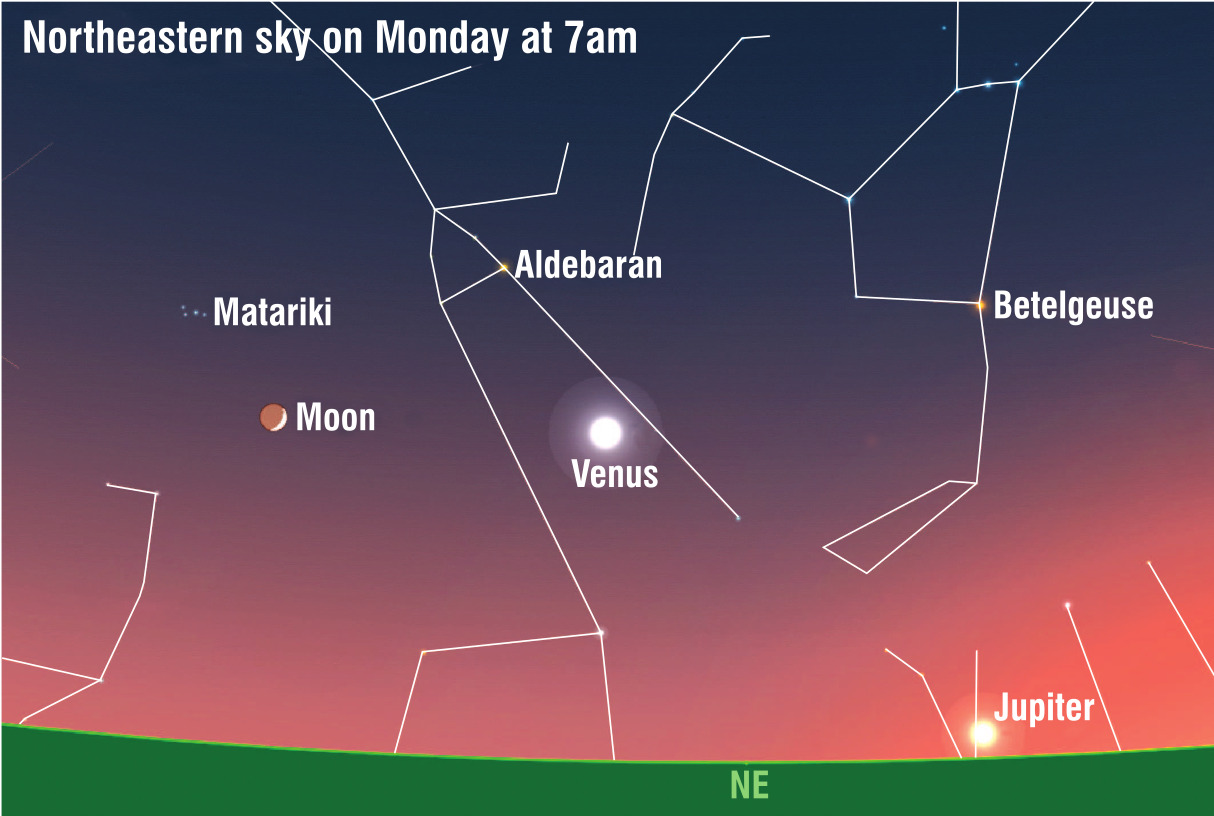
From here in Otago, with our crisp, dark winter skies, the view is magnificent. Through binoculars, the moon will appear barely five degrees from Matariki — close enough to feel intimate. And just to the right, bright Venus blazes away, unmistakable in the constellation Taurus. Jupiter, still low, will just be rising.
Matariki isn’t just a pretty knot of stars. It’s a cluster of hot, young suns around 440 light years away, born together in a stellar nursery and now slowly drifting apart. Māori see it as a mother and her children, each with a role in sustaining life on Earth. The cluster’s annual return to the dawn sky marks the New Year in the Maramataka — the Māori lunar calendar — and invites us to reflect, remember and reset.

There’s a quiet synchronicity in the date. Fifty six years ago, on July 21 1969 (New Zealand time), Neil Armstrong took his first steps on the moon. This same moon — now older, pocked and luminous — will be keeping company with Matariki in the still before dawn.
I’ve seen this sky from sea and summit, city and rural, and it never fails to move me. There’s something about watching the moon brush past ancient stars that puts things in perspective.
So, boil the kettle, pull on your coat and look up. The universe is doing its thing, and it’s worth watching.












